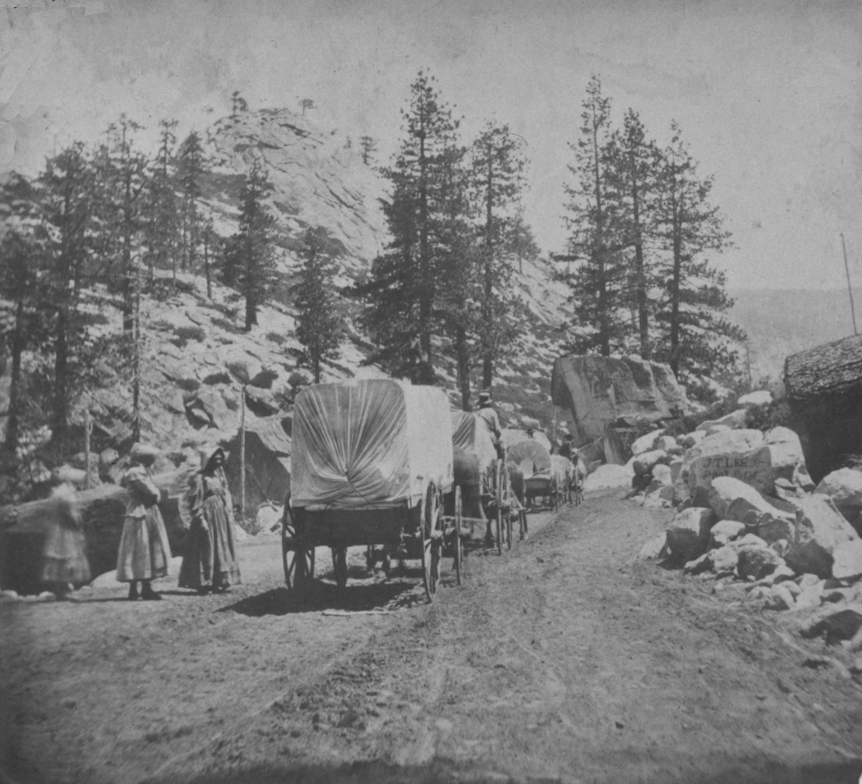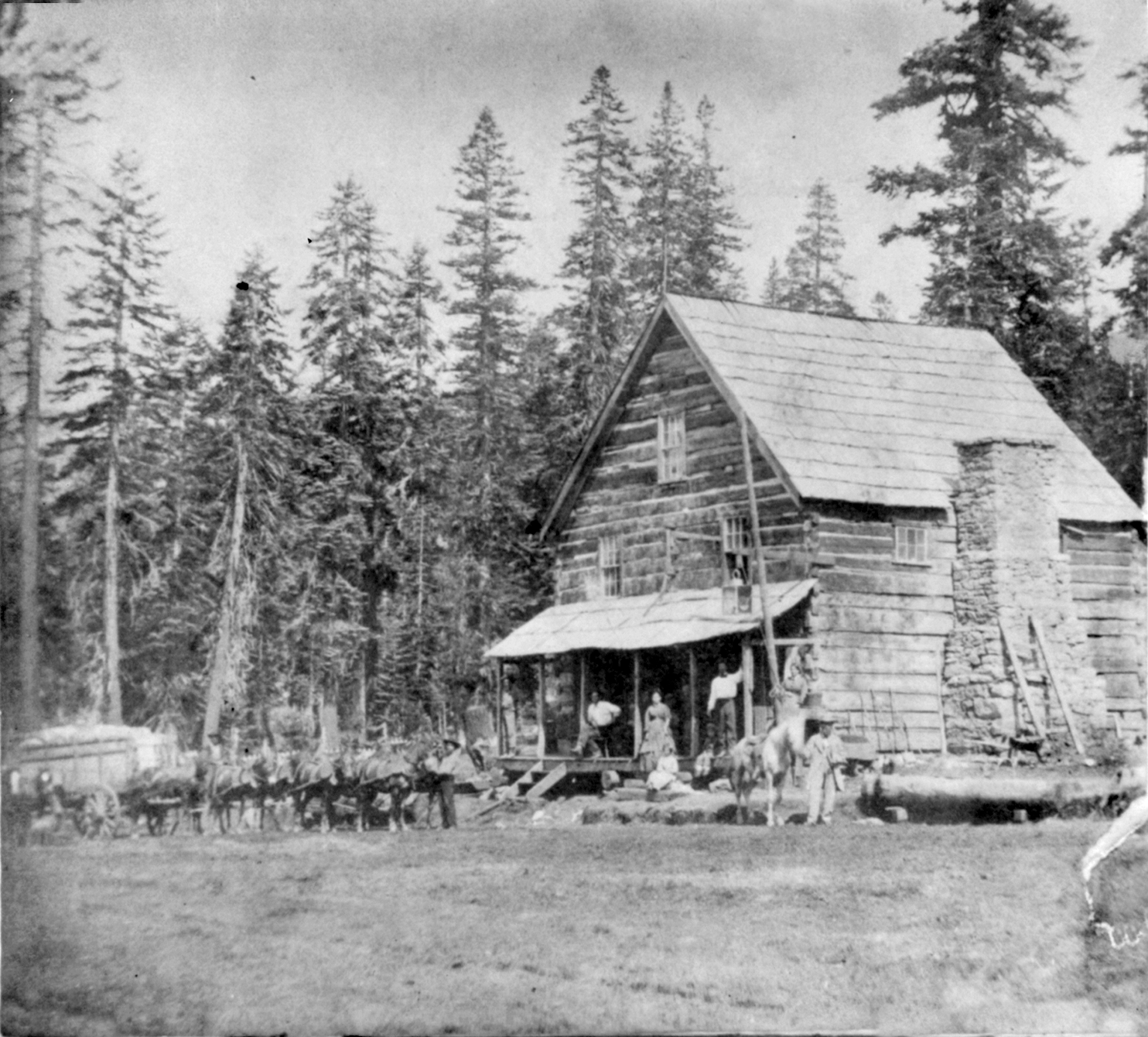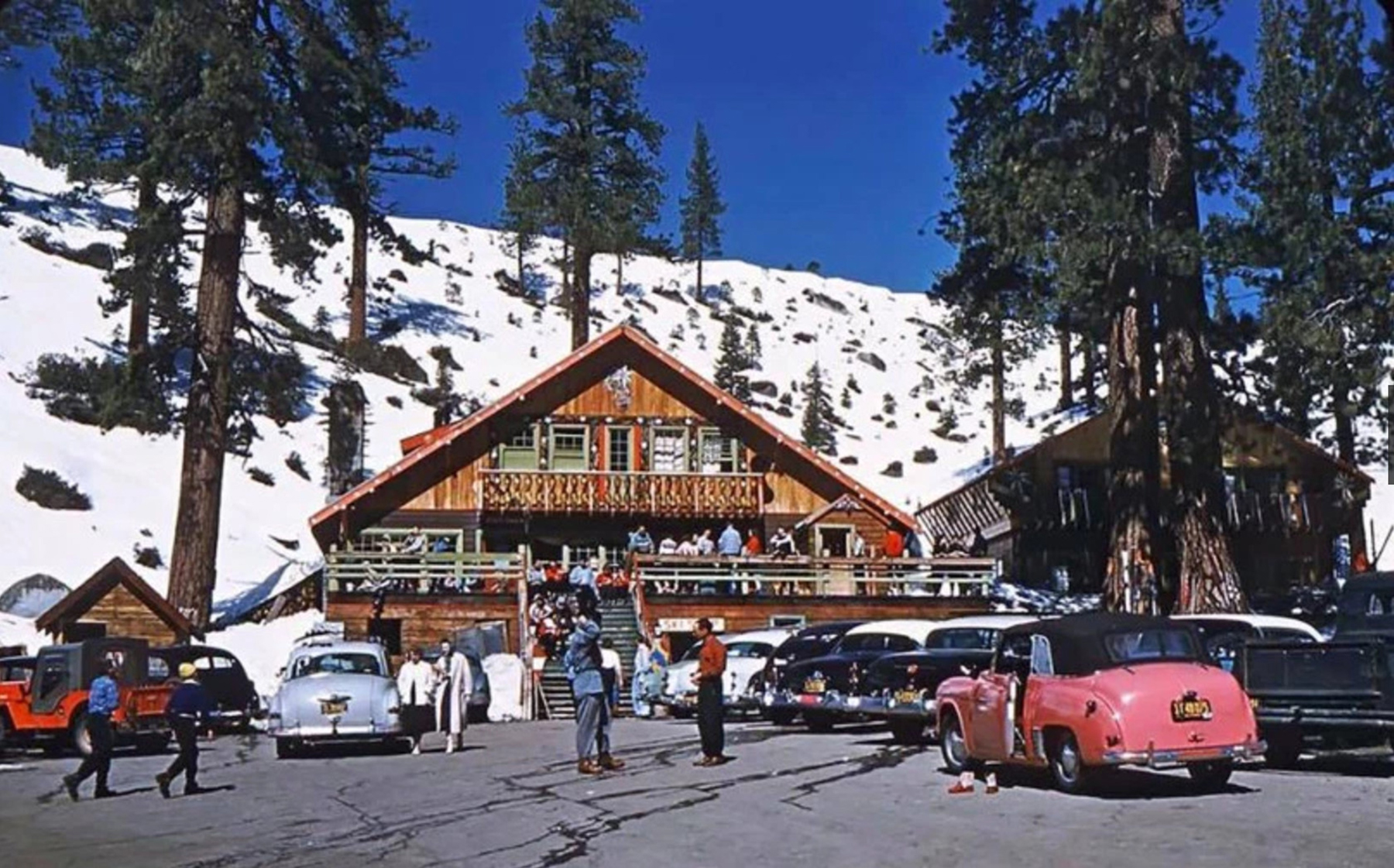1. Before the ranch
 Phillips Station. Photography courtesy of the El Dorado County Historical Museum
Phillips Station. Photography courtesy of the El Dorado County Historical Museum
The route up and over Echo Summit, was at one time, the predominant overland means of moving mail, goods and people across the Sierra Nevada. Given that it has the shortest distance and the most accommodating terrain, why didn’t it end up as a 4-lane highway with the traffic volume seen on Interstate-80. The answer is in the history of the area you travel through to reach Sierra-at-Tahoe. If things had gone a bit differently the resort we know and love today would likely have “never been”.

Emigrants coming over the Sierras
Historic events shifted the flow of traffic from Echo Summit to Donner Summit in the 1860s. Thereafter, the communities that grew to support the route from Placerville to Tahoe were small, everyone knew each other along the trail and there was a sense of camaraderie and collaboration - not unlike a family. Things became more about quality and less about volume, as compared with communities adjacent to a high-speed freeway where no one would notice their presence, but for a sign or emergency stop. This chapter explores the Echo Summit area and how its approaches evolved, and why they influenced, and continue to influence, the Sierra resort you have come to enjoy. Discover this rich and important history that contributes to Sierra’s family vibe.
The drainages within the Sierra-at-Tahoe resort make up part of the headwaters of the South Fork of the American River. Everyone that has attended a California grade school can tell you the history of gold discovery downstream near Coloma by James Marshall in 1848. The discovery triggered the California Gold Rush of 1849. The small trickle of emigrants along the Oregon and California Trails became a flood of people wanting to get to California.
One of the routes over the Sierras to California came through the Tahoe basin. It was known to local indigenous peoples of the area and used by a few early emigrants coming to California overland from the east. It was only a path or roughly defined route. Most venturing to Placerville and beyond, were going over the Carson Pass route, some distance to the south, which is Highway 88 and Mormon Emigrant Trail today. In the spring of 1852 John Calhoun Johnson of Placerville surveyed and cleared this new shorter route. But it was not perfect as you shall find out.

American Hotel on Echo Summit

Wagons at Riverton destined for Virgina City
Johnson’s route left Placerville and went by what is today Pollock Pines and descended into what is today Pacific House, before it crossed the American River and then climbed the hill up Peavine Ridge, away from the river. It then stayed high until about where Wrights Road is today, returning to the river. Just above where Strawberry Lodge is it crossed over Pyramid Creek and then ascended the hill to where Camp Sacramento is today. From here it followed the American River east until a few miles east of Sierra at Tahoe Road onto what is now Johnsons Pass Road.
While gold being discovered downstream in 1849 started the increase traffic over the summit, it was the discovery of silver in Virginia City Nevada (the Comstock Lode) in 1859 that would have the greatest impact on the Echo Summit route. Every tool, board, pipe, miner and food item had to be transported to Virginia City, mostly over Echo Summit, at least originally.
Over the years many improvements were made to this route as it returned to follow the river and various communities sprang up along the way to support the many wagons, stage coaches and even the Pony Express. At one time even a railroad was contemplated along the route. But alas, other parties felt a route over Donner Summit was more appropriate and traffic shifted to that route, thus regulating the Echo Summit route to local traffic and sports enthusiasts at a trickle of the former astronomical rate of traffic. The Echo Summit route became the ghost town of highways until after World War II, when a new form of ‘White Gold’ became sought after; snow and winter sports became popular on the summit. A number of small ski hills appeared: at Strawberry Lodge, Twin Bridges, Camp Sacramento, Phillips, Echo Lakes and at the crest of the summit too.
 Edelweiss Ski Area. Photograph courtesy Donner Historical Society.
Edelweiss Ski Area. Photograph courtesy Donner Historical Society.